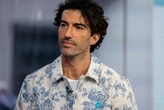Healthcare is not one test, one device, one symptom, or one appointment. Yet too often, that is how it is practiced: in silos.
Specialists focus only on their domain. Systems capture fragments of data. Patients are left to connect the dots themselves, often with gaps that carry serious consequences.
Think of it like planning a family meal.
In the siloed version, one parent makes a big pasta dinner without asking anyone. Two kids already had pasta at school, a spouse ate late, and a guest cannot eat gluten. The result is frustration. It’s wasted food and people who feel unseen.
In the connected version, the parent checks in with everyone. The parent considers their needs and preferences, and then creates a meal that works for the whole group. It’s more efficient and satisfying. It creates a stronger connection.
WHY NOT HEALTHCARE?
Healthcare should work the same way. Siloed care creates waste and frustration, and it results in patients not receiving the care they need. Integrated care—where mental health, physical health, lifestyle, and environment are considered together—creates something far more powerful. Care is continuous, connected, and deeply human.
The future of healthcare is not about making the silos more efficient. It is about connection. It is about moving from fragmented to whole, from reactive to proactive, from “what’s missing?” to “we see you.”
When I learned about the Centers for Medicare & Medicaid Services’ (CMS) Kill the Clipboard initiative, for the first time in a long time, I felt real optimism in our healthcare system.
The idea is simple. You check in at a clinic, scan a QR code, and your complete health record labs, prescriptions, imaging, and wearables flow instantly and securely to your provider. No clipboards. No missing files. No blank stares when you say, “It’s in my chart.”
Why can airport security recognize us with biometrics in seconds, yet healthcare still can’t offer the same seamless experience? Other consumer sectors have already proven that elegant, tech-enabled solutions can reduce friction and transform expectations. Healthcare should be no different. What might look like a small convenience, a unified record, actually unlocks something far greater. It doesn’t just make care faster. It makes it smarter, safer, and more continuous.
IT’S ABOUT CONNECTION
Kill the Clipboard is not just about digitization. It’s about connection. It brings us closer to a world where healthcare is informed, personalized, and proactive, where a patient’s story is whole, not fragmented, where care is based on insight, not guesswork.
Credit goes to Amy Gleason and her team at CMS, who are driving this with a rare combination of vision and urgency. Their goal is a nationwide capability by Q1 2026, lightning speed in healthcare, and they’re doing it through a powerful public-private collaboration that includes over 60 partners, from electronic health record vendors to tech innovators. The goal: Give every American access to all of their health data anytime, anywhere, and let them share it instantly with whomever they choose.
Artificial intelligence can take it from there, surfacing risks, flagging anomalies, predicting complications, and helping clinicians make faster, smarter decisions. It can give individuals timely insights to guide their daily choices and help them stay healthier, longer.
I never thought I’d live to see a moment like this. But now I have. And I want to say it clearly: This is the beginning of something big. A future where patients are at the center. A future where prevention is possible. A future where the system finally works the way it should, not someday, but now.
So yes, it starts with a QR code. But it ends with a healthcare system that finally sees the whole person.
And that changes everything.
Noosheen Hashemi is CEO of January AI.






No comments